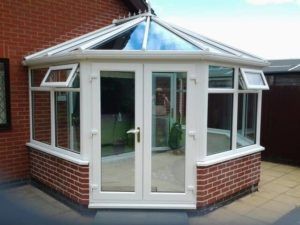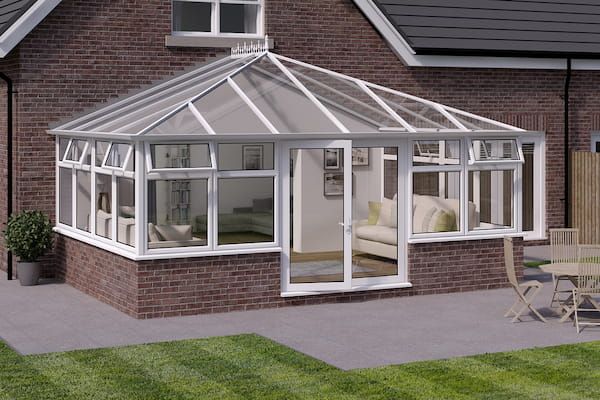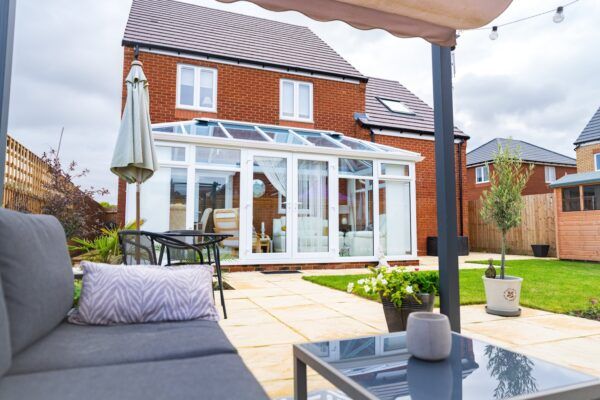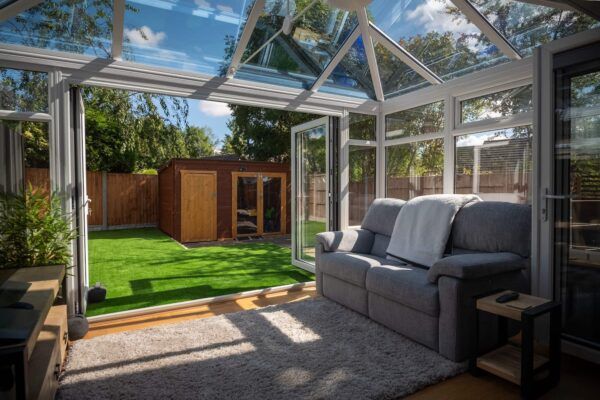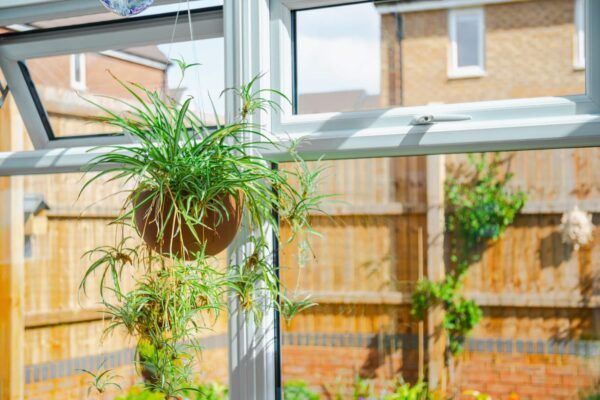Over the years, as technology has developed, so has the conservatory.
Once reserved for nobility, conservatories have evolved from luxury greenhouses to everyday home extensions.
Conservatories have become so energy-efficient and comfortable that they are now often used daily, all year round. A conservatory is now more of an extension of our home rather than an occasional room.
Whilst this makes a conservatory a much more cost-effective and practical investment, it does blur the line somewhat between what is a conservatory and what is a home extension.
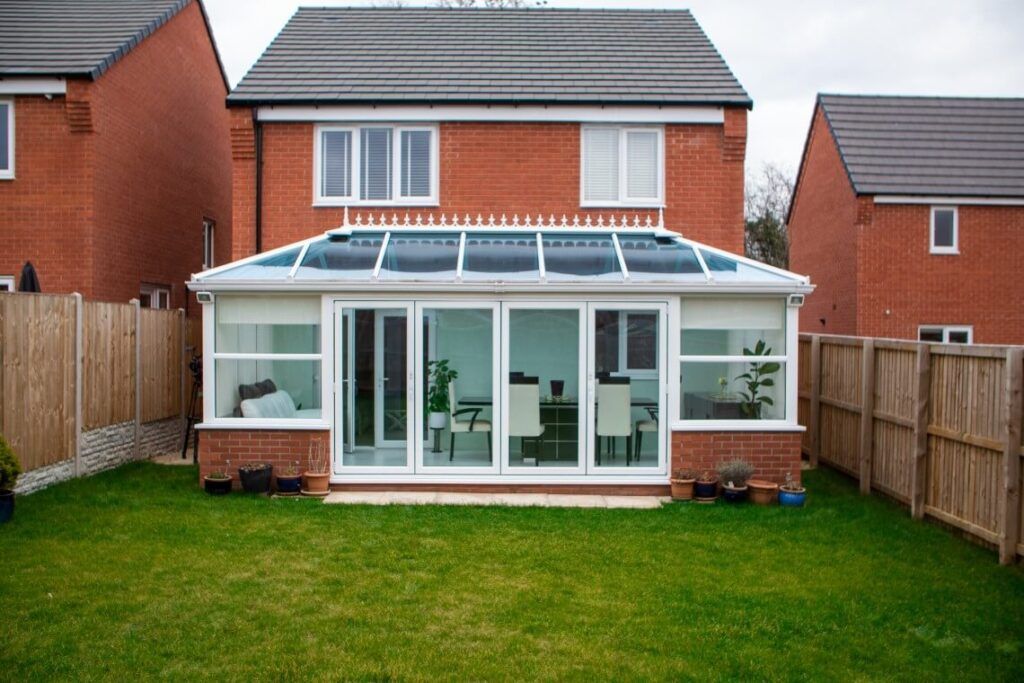
What is the definition of a conservatory?
In simple terms, the definition of a conservatory is a building or room usually attached to a house, commonly built to create extra space in a home.
While conservatories can have various design elements, they typically feature glass walls, uPVC frames and a roof – creating a sun-lit, pleasant space perfect for socialising and relaxation.
In order to understand what qualifies as a conservatory, we must look at the rules that make conservatories ‘permitted developments’ and exempt them from planning permission and building regulations.
The conditions that form the legal definition of a conservatory and separate conservatories from extensions are:
- Built at ground level.
- Less than 30 square metres in size.
- Separated from the house by external walls, doors or windows.
- Has its own independent heating system.
Glazing and fixed electrical installations comply with the relevant building regulations.
Is a conservatory classed as an extension?
So, what are the differences between a conservatory vs an extension?
Whilst adding a conservatory or orangery does create extra living space, it is usually classed as a ‘permitted development’ rather than a home extension, providing that it meets the conditions listed above.
Home extensions can usually be identified by one or more of the following features:
- Connected to the central heating in the main house.
- A solid roof.
- Solid walls rather than glazed.
- Open plan with the rest of the house.
- Connected with an interior rather than exterior wall.
Whilst there are subtle differences in the design of an orangery and a conservatory, orangeries are usually classed as permitted developments too, providing they meet the conditions above.
The history of conservatories
When the word conservatory was first coined, it was used to describe a non-glazed building used to store food.
It wasn’t until the 17th century that the word was used to describe glazed structures. At this time, conservatories were often stand-alone buildings like greenhouses, used to protect plants from the cold weather.
The first conservatories were used by nobility, with the first known conservatory in Britain constructed in Oxford University’s Botanic Gardens in 1637.
As the conservatory became more popular, Sir Joseph Paxton designed Chatsworth Houses’ iron-framed conservatory, which covered three-quarters of an acre and was the largest glass building in the world at that time.
Paxton then went on to design the spectacular 19-acre Crystal Palace in London. Crystal Palace used 293,635 panes of glass and, at the time, was the largest enclosed space on earth.
Conservatories became popular amongst the very wealthy during the Victorian era. By the end of the 19th century, conservatories were sometimes being used to host social events, like tea parties.
Popularity dipped during the early 20th century as war raged and austerity set in. It wasn’t until after the Second World War, when the economy had recovered a little and technology was improving, that conservatories began to regain popularity.
As technology has progressed, we have seen the introduction of features like double-glazing and self-cleaning glass. Over the years, conservatories have become more comfortable and affordable, making them an accessible and practical investment.

The benefits of modern conservatories
21st-century conservatories come in a variety of styles, many of which mimic the attractive designs of bygone eras, but whilst they may look similar, their performance and function have changed.
They’re also much more comfortable, energy-efficient and long-lasting than ever. Modern technology has led to many advancements in the materials used to build conservatories. Some benefits of modern conservatories include:
- Durability and weather-resistant materials, including self-cleaning glazing, requiring less maintenance.
- Improved accessibility features, making them more usable for people with disabilities.
- Cost-effective options available, making them more accessible to a broader range of homeowners.
- Eco-friendly building practices, DIY options, and sustainable materials make them easier to construct while reducing environmental impact.
- Energy efficiency materials, including solar control glazing and glass panes filled with argon gas for exceptional insulation and soundproofing.
High-performance products mean conservatories can be used more like real extensions to the home as they are comfortable all year round. And indeed, many are being turned into home extensions with the addition of solid roofs and central heating.
What is the purpose of a conservatory?
While a conservatory’s main purpose has previously been a dedicated space to grow plants, advances in designs and materials make them now much more versatile. With temperature-control design features, they can be enjoyed all year round and are a place to relax or entertain, bringing the outdoors in.
Today, conservatories are commonly used to affordably add valuable living space to a house to accommodate a growing family. They are now used for all sorts of purposes, including kids’ playrooms, offices, dining rooms, and kitchens, adding real value to our homes. Explore some of the other ways you can use a conservatory.

Accessible and affordable conservatories
At ConservatoryLand, we offer a variety of conservatories made to your exact specifications. With each element of the build in your hands, you can customise the options based on your needs and budget.
If you’ve got a specific style in mind, you can build your conservatory using our quote engine. Alternatively, you can download a free brochure to browse our range of conservatories and customisation options.
